What is Copper ore?
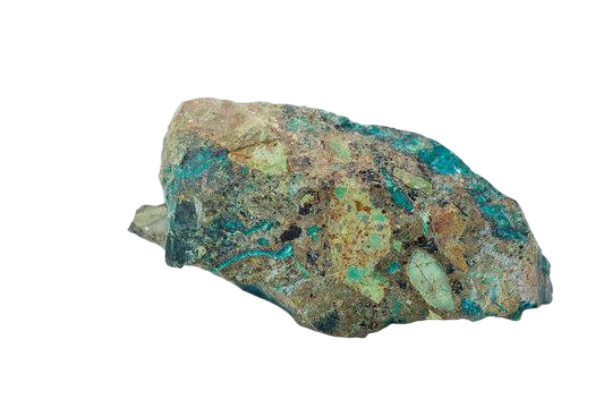
Copper ore is a type of rock that contains copper in the form of copper oxides, carbonates, or sulfides. Copper is an essential mineral that is used in various applications due to its excellent electrical and thermal conductivity, corrosion resistance, and malleability.
**Geological Concept:**
Copper ore forms through the weathering and erosion of copper-rich rocks, such as granite and basalt. Copper is often concentrated in the Earth’s crust through the process of plate tectonics, where copper-rich rocks are uplifted and exposed to weathering and erosion.
**Applications:**
1. Electrical Conductors: Copper is used as an excellent conductor of electricity in power transmission lines, electrical wiring, and electronic components.
2. Electronics: Copper is used in electronic devices such as circuit boards, printed circuit boards, and semiconductors.
3. Construction: Copper is used as a building material for pipes, gutters, downspouts, and roofing.
4. Cookware: Copper is used as a cooking material for pots, pans, and utensils due to its excellent heat conductivity and durability.
5. Medical Equipment: Copper is used in medical equipment such as implants, surgical instruments, and diagnostic devices.
6. Aerospace: Copper is used in aerospace applications such as aircraft wiring, landing gear, and engine components.
7. Water Treatment: Copper is used as an antimicrobial agent in water treatment systems to prevent bacterial growth.
8. Paints and Coatings: Copper is used as a pigment in paints and coatings due to its bright red color.
**Interesting Facts:**
* Copper has been used by humans for over 10,000 years.
* The largest copper-producing countries are Chile, Peru, and China.
* Copper ore can be found in various forms, including chalcopyrite (CuFeS2), bornite (Cu5FeS4), and malachite (Cu2CO3(OH)2).
* The Earth’s crust contains about 0.006% copper by weight.
**Types of Copper Ore:**
1. Chalcopyrite (CuFeS2): This type of copper ore is rich in iron and sulfur and is often used in steel production.
2. Bornite (Cu5FeS4): This type of copper ore contains both copper and iron sulfides and is often used in copper production.
3. Malachite (Cu2CO3(OH)2): This type of copper ore contains copper carbonate and hydroxide minerals and is often used in decorative applications.
4. Azurite (Cu3(CO3)2(OH)2): This type of copper ore contains copper carbonate minerals and is often used as a pigment in paints and cosmetics.
Overall, copper ore plays a vital role in various industries due to its unique properties and versatility.
What is Zinc ore?

Zinc ore is a type of rock that contains zinc in the form of zinc oxides, carbonates, or sulfides. Zinc is an essential mineral that is used in various applications due to its excellent corrosion resistance, electrical conductivity, and biological importance.
**Geological Concept:**
Zinc ore forms through the weathering and erosion of zinc-rich rocks, such as sedimentary rocks and volcanic rocks. Zinc is often concentrated in the Earth’s crust through the process of plate tectonics, where zinc-rich rocks are uplifted and exposed to weathering and erosion.
**Applications:**
1. Galvanizing: Zinc is used as a protective coating for steel to prevent corrosion.
2. Electronics: Zinc is used in electronic devices such as batteries, solar panels, and semiconductors.
3. Alloys: Zinc is used in various alloys such as brass (copper-zinc alloy), bronze (copper-tin-zinc alloy), and titanium-zinc alloy.
4. Cosmetics: Zinc oxide is used as a pigment in cosmetics and personal care products.
5. Medicine: Zinc is an essential nutrient for human health and is used in pharmaceuticals and supplements.
6. Pigments: Zinc oxide is used as a pigment in paint, coatings, and plastics.
7. Food Packaging: Zinc is used as a coating for food packaging to prevent corrosion and extend shelf life.
8. Fertilizers: Zinc is used as a micronutrient in fertilizers to promote plant growth.
**Interesting Facts:**
* The largest zinc-producing countries are China, Peru, and Australia.
* Zinc ore can be found in various forms, including sphalerite (ZnS), smithsonite (ZnCO3), and hemimorphite (Zn4Si2O7(OH)2·H2O).
* The Earth’s crust contains about 0.004% zinc by weight.
* Zinc is an essential nutrient for humans and animals, playing a crucial role in immune function, wound healing, and protein synthesis.
**Types of Zinc Ore:**
1. Sphalerite (ZnS): This type of zinc ore is rich in sulfur and is often used in galvanizing and steel production.
2. Smithsonite (ZnCO3): This type of zinc ore contains zinc carbonate minerals and is often used as a pigment in paints and cosmetics.
3. Hemimorphite (Zn4Si2O7(OH)2·H2O): This type of zinc ore contains zinc silicate minerals and is often used in ceramics and glass manufacturing.
Overall, zinc ore plays a vital role in various industries due to its unique properties and versatility.
What is Lead ore?
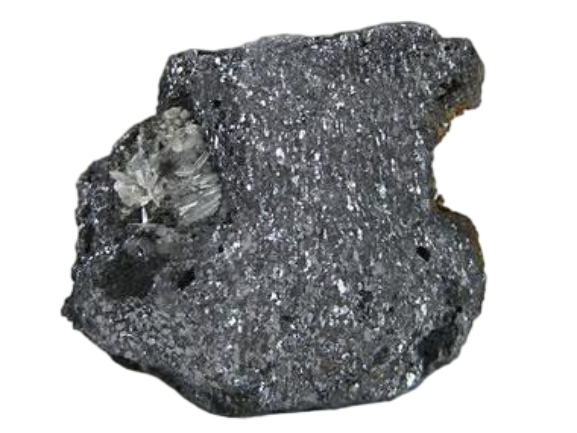
Lead ore, also known as galena, is a naturally occurring mineral composed of lead sulfide (PbS). It is the primary ore of lead and is commonly found in various geological formations worldwide.
What is Iron ore?
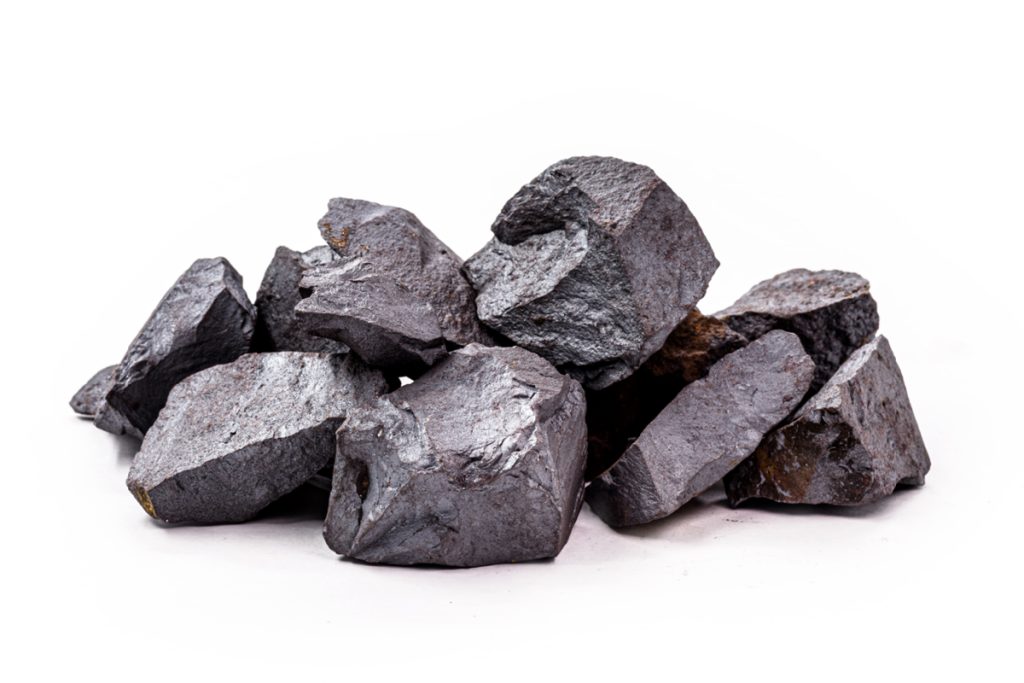
Iron ore is a type of rock that contains iron in the form of iron oxides, such as magnetite (Fe3O4) and hematite (Fe2O3). Iron ore is the primary source of iron, which is the most abundant metal on Earth. Iron ore is typically found in sedimentary rocks, metamorphic rocks, and igneous rocks.
**Geological Concept:**
Iron ore forms through the weathering and erosion of iron-rich rocks, such as basalt and gabbro. The iron oxides are concentrated in the rock through the process of sedimentation, where iron-rich particles settle at the bottom of oceans and lakes. Over time, these deposits are compressed and cemented together to form iron ore deposits.
**Applications:**
1. Steel Production: Iron ore is the primary source of iron used in the production of steel, which is used in construction, transportation, and consumer goods.
2. Pigment Production: Iron oxide is used as a pigment in paint, coatings, and other colorants.
3. Ferroalloys: Iron ore is used to produce ferroalloys, which are alloys of iron with other metals like chromium, nickel, and molybdenum.
4. Catalysts: Iron-based catalysts are used in various industrial processes, such as petroleum refining and chemical synthesis.
5. Fertilizers: Iron oxide is used as a fertilizer additive to improve soil fertility and plant growth.
6. Cosmetics: Iron oxide is used as a pigment in cosmetics and personal care products.
7. Pharmaceuticals: Iron oxide is used as an excipient in some pharmaceutical products.
8. Environmental Remediation: Iron oxide can be used to remove heavy metals and other pollutants from contaminated soil and water.
**Interesting Facts:**
* Iron ore is one of the most widely traded commodities in the world.
* The largest producers of iron ore are Australia, Brazil, and China.
* Iron ore can be found in various forms, including hematite, magnetite, limonite, and siderite.
* The Earth’s crust contains about 5% iron by weight.
**Types of Iron Ore:**
1. Hematite (Fe2O3): This type of iron ore is rich in iron and is often used in steel production.
2. Magnetite (Fe3O4): This type of iron ore is also rich in iron and is often used in high-temperature applications.
3. Limonite (FeO(OH)): This type of iron ore is a hydrated iron oxide that is often used in paint and coatings.
4. Siderite (FeCO3): This type of iron ore is a carbonate mineral that is often used in cement production.
Overall, iron ore plays a crucial role in various industries due to its unique properties and versatility.
What is Gilsonite?
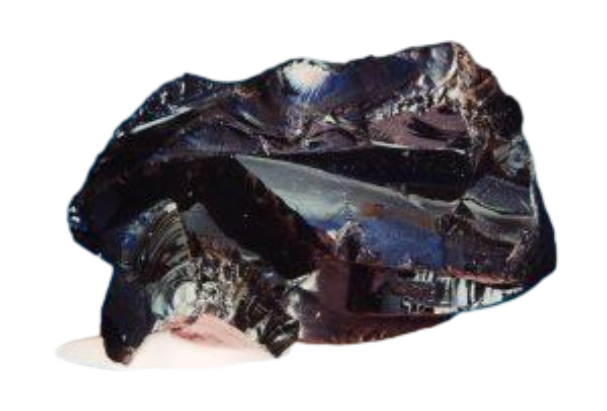
Gilsonite is a type of natural asphalt, also known as Birchite or Utah Asphaltum. It is a rare, waxy, and highly viscous substance that is extracted from oil shale deposits. Gilsonite is composed primarily of bitumen, a complex mixture of hydrocarbons, and is characterized by its black or dark brown color.
**Geological Concept:**
Gilsonite forms through the degradation of organic matter over millions of years. It is typically found in oil shale deposits, which are sedimentary rocks that contain high concentrations of organic matter, such as plant and animal remains. When these deposits are subjected to heat and pressure, the organic matter breaks down into kerogen, a waxy, insoluble material. Over time, the kerogen is transformed into bitumen, which can migrate through the rock and accumulate in pockets or seams. Gilsonite is the end product of this process, resulting from the diagenesis (compaction and cementation) of the bitumen.
**Applications:**
1. Coatings and Paints: Gilsonite’s unique properties make it an excellent additive for coatings and paints. It enhances their adhesive properties, increases their durability, and provides UV resistance.
2. Adhesives: Gilsonite’s viscosity and flexibility make it an effective adhesive for bonding various materials, including wood, metal, and glass.
3. Bituminous Products: Gilsonite is used as a binding agent in various bituminous products, such as roofing materials, paving materials, and construction materials.
4. Oil Refining: Gilsonite can be used as a feedstock for the production of petroleum products, such as lubricants and fuels.
5. Pharmaceuticals: Gilsonite has been used in some pharmaceutical applications due to its alleged medicinal properties.
6. Cosmetics: Gilsonite has been used in some cosmetics and personal care products due to its perceived benefits for skin and hair care.
7. Agriculture: Gilsonite has been used as a soil amendment to improve soil structure and fertility.
Interesting Facts:
* Gilsonite was first discovered in 1888 in Utah, USA.
* It was initially used as a waterproofing agent for buildings and bridges.
* Gilsonite has a high melting point (around 200°F/93°C), making it resistant to degradation.
* It has been used as a fire-resistant coating for buildings and aircraft.
Overall, Gilsonite’s unique properties make it a valuable resource with a wide range of applications across various industries.
What is Bentonite?
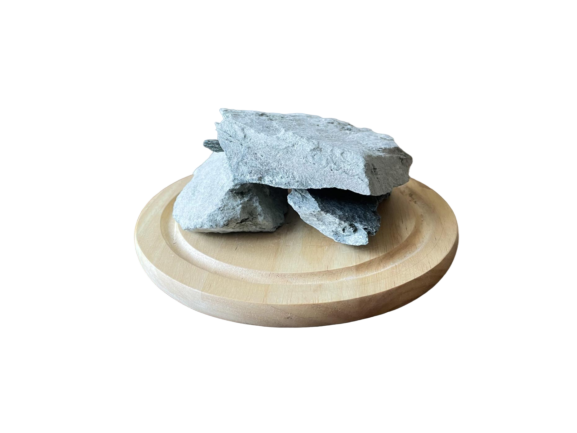
Bentonite is a type of clay mineral that is composed primarily of the mineral montmorillonite, a type of smectite clay. It is a soft, porous, and absorbent material that is typically found in volcanic ash deposits, sedimentary rocks, and sedimentary basins. Bentonite is known for its unique properties, which make it an essential component in various industries.
**Geological Concept:**
Bentonite forms through the alteration of volcanic ash and sedimentary rocks under high temperatures and pressures. The process involves the replacement of calcium ions with aluminum ions in the volcanic ash, leading to the formation of montmorillonite, a type of smectite clay. Bentonite can also be formed through the metamorphism of shales and other sedimentary rocks.
**Applications:**
1. Drilling Mud: Bentonite is used as a key component in drilling muds, which are used to lubricate and stabilize drill bits during oil and gas exploration.
2. Foundry: Bentonite is used as a bonding agent in foundry applications, helping to bind sand molds together.
3. Ceramics: Bentonite is used as a raw material in the production of ceramic products, such as pottery and tile.
4. Cosmetics: Bentonite is used in some cosmetic products, such as face masks, soaps, and toothpaste, due to its absorbent properties.
5. Pharmaceuticals: Bentonite is used as an excipient in some pharmaceutical products, such as capsules and tablets.
6. Food: Bentonite is used as an additive in some food products, such as animal feed and food supplements.
7. Paper: Bentonite is used as a sizing agent in paper production to improve its strength and opacity.
8. Textiles: Bentonite is used as a sizing agent in textile production to improve fabric softness and durability.
9. Wastewater Treatment: Bentonite is used to remove impurities from wastewater and to improve its clarity.
**Interesting Facts:**
* Bentonite was first discovered in Fort Benton, Wyoming, USA.
* The largest producer of bentonite is the United States.
* Bentonite has a very high cation exchange capacity (CEC), which makes it an effective adsorbent.
* It has been used as a natural sealant for underground storage tanks and pipes.
* Bentonite can be used as a soil amendment to improve soil structure and fertility.
**Types of Bentonite:**
1. Calcium-based bentonite: This type is most commonly used in drilling muds.
2. Sodium-based bentonite: This type is often used in cosmetic applications.
3. Potassium-based bentonite: This type is used in some food and pharmaceutical applications.
Overall, bentonite’s unique properties make it an essential component in various industries, from oil exploration to cosmetics and pharmaceuticals.
What is Talc?
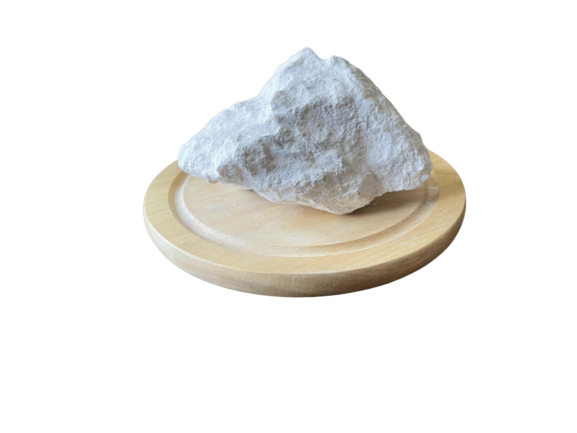
Talc is a type of clay mineral that is composed of hydrated magnesium silicate (Mg3Si4O10(OH)2). It is a soft, powdery, and easily crushed mineral that is often found in metamorphic rocks, such as marble and soapstone. Talc is also known as talcose or steatite.
**Geological Concept:**
Talc forms through the metamorphism of magnesium-rich rocks, such as dolostone or magnesite, under high temperatures and pressures. The magnesium ions react with silicon dioxide (quartz) to form talc. Talc can also be formed through the alteration of dolomite (calcium magnesium carbonate) under low-grade metamorphic conditions.
**Applications:**
1. Cosmetics: Talc is a common ingredient in various personal care products, such as baby powder, face powder, and eyeshadow, due to its softening and drying properties.
2. Paper: Talc is used as a filler and coating agent in paper production to improve its opacity and printability.
3. Pharmaceuticals: Talc is used as an excipient in some pharmaceutical products, such as tablets and capsules.
4. Plastics: Talc is used as a filler and reinforcing agent in plastics to improve their strength and durability.
5. Paints and Coatings: Talc is used as a pigment and extender in paints and coatings to improve their opacity and durability.
6. Ceramics: Talc is used as a flux in ceramics to reduce the melting point of the clay body.
7. Textiles: Talc is used as a softener and finisher in textiles to improve their texture and appearance.
8. Food: Talc is used as an anti-caking agent in some food products, such as coffee creamers and soups.
9. Catalysts: Talc can be used as a catalyst in some chemical reactions due to its ability to adsorb and desorb reactants.
**Interesting Facts:**
* Talc is also known as “baby powder” due to its traditional use in baby care products.
* The largest producer of talc is China.
* Talc can be toxic if inhaled, so it’s essential to handle it with proper safety precautions.
* Talc has been used in the production of brake pads and linings due to its friction-reducing properties.
**Types of Talc:**
1. Microcrystalline talc: This type has smaller crystal sizes than macrocrystalline talc and is often used in cosmetics and pharmaceuticals.
2. Macrocrystalline talc: This type has larger crystal sizes than microcrystalline talc and is often used in paper production and construction materials.
3. Expansive talc: This type has a higher expansion capacity than other types of talc and is often used in drilling muds and oil well applications.
Overall, talc’s unique properties make it an essential component in various industries, from cosmetics to construction materials.